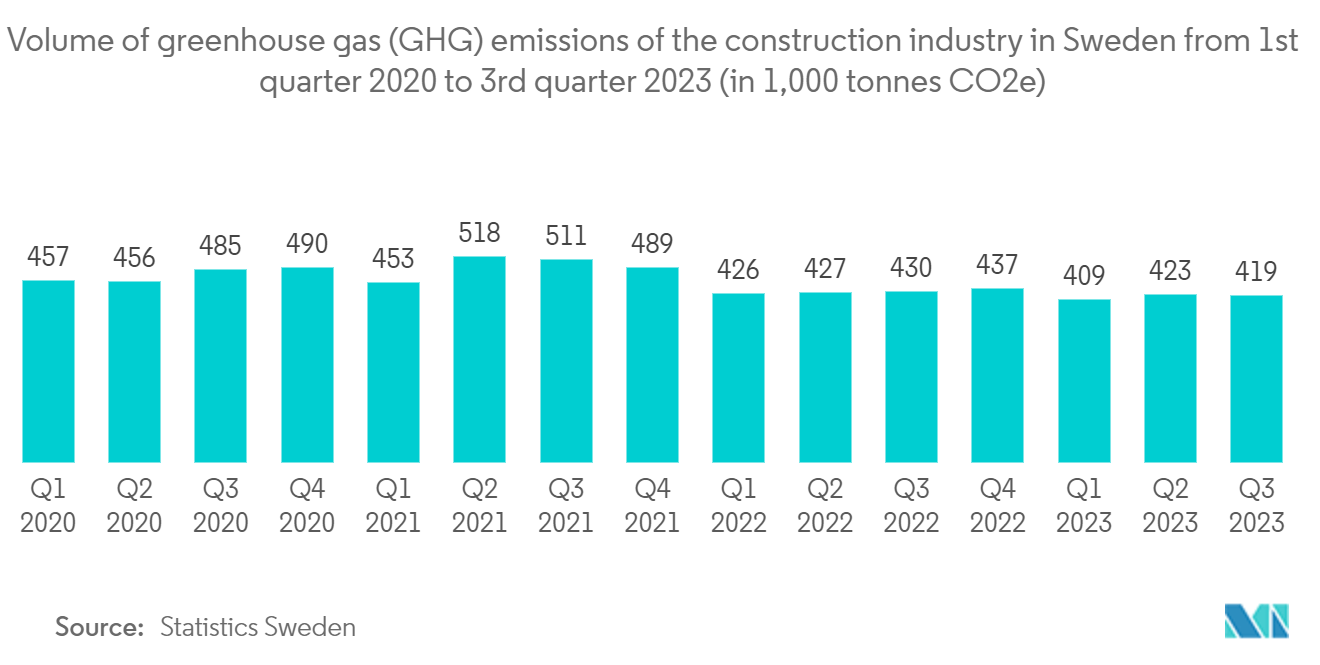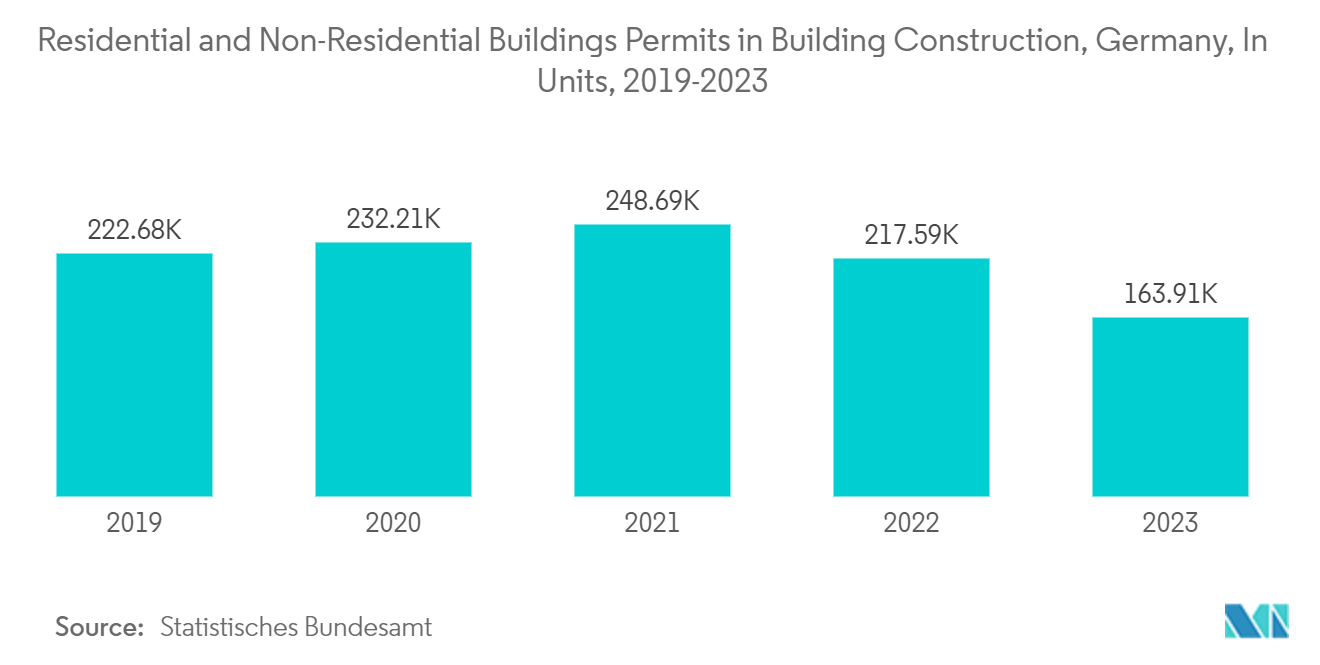Market Trends of Europe Construction Equipment Industry
The Electric Drive Type is Expected to Drive the Growth of the Market
The construction industry has been rapidly shifting toward electric construction equipment because of its many advantages, including cost-effectiveness and environmental sustainability. Growing environmental concerns are a major factor in European nations' growing acceptance of electric construction equipment. Due to stringent regulations to curb carbon emissions and foster sustainability, construction companies seek environmentally friendly substitutes for conventional diesel-powered equipment.
With zero emissions and reduced noise levels, electric construction equipment provides a more environmentally friendly option that is perfect for urban construction sites where noise pollution is an issue. In addition, long-term costs are lower for electric construction equipment. Electric equipment has lower running costs than traditional diesel-powered equipment, even though the initial investment may be higher.
Furthermore, owing to technological advancements, electric construction equipment now performs much more efficiently, making it a good choice for building companies trying to save costs without sacrificing quality.
Key players in the construction equipment manufacturing sector are actively introducing new models of construction equipment in the European region, further driving market growth. For instance:
- In September 2023, LiuGong unveiled a new 21-tonne electric wheeled loader in Europe. This electric wheel loader features a substantial 423kWh lithium iron phosphate battery, exemplifying the industry's commitment to electric technology.
- In July 2023, Komatsu Ltd introduced the PC33E-6, a novel 3-ton class electric mini excavator in Europe. This electric excavator is powered by a 35kWh lithium-ion battery, aligning with the growing trend toward electrification.
- In June 2023, the battery-electric EC230 excavator showed success in a number of commercial applications in Europe and Asia. It is currently offered for sale to a limited number of European clients. Along with the same performance as its conventional diesel counterpart, the 23-ton EC230 Electric excavator also has the advantages of zero emissions, low noise, low vibration, improved controllability, and a lower total cost of ownership. Operators have reported that it achieves a digging force comparable to the Volvo EC200E diesel equivalent, which is achieved with a faster cycle time and significantly reduced noise.
The segment is expected to witness substantial growth during the forecast period, driven by the advancements listed above across the region.

Germany is Expected to Hold a Considerable Market Share in the Market
The construction equipment market in Germany is being driven by rising investments in enhancing infrastructural capability, the government's focus on building efficient road transportation networks, and the demand for advanced equipment such as electric-powered equipment. The country's expanding construction industry has a massive demand for construction equipment.
- In October 2023, BEOS AG gave Implenia and its joint venture partner Dressler Bau GmbH the construction of two more sections of the groundbreaking BERLIN DECKS city campus in Berlin-Moabit. Implenia is the project's technical lead.
- The German Federal Government and Deutsche Bahn (DB) unveiled the largest and most extensive infrastructure program for the railway network and stations since the 1994 railway reform in September 2023.
- This declaration was made in Frankfurt during the Railway Summit hosted by the Federal Ministry for Digital Affairs and Transport in mid-September 2023.
Various domestic and international manufacturing companies operating in the market are also actively engaging in launching new products and expanding their business presence to cater to the increasing demand in the country, which would positively impact the target market.
Based on the aforementioned points, the market studied is expected to witness significant growth during the forecast period.



